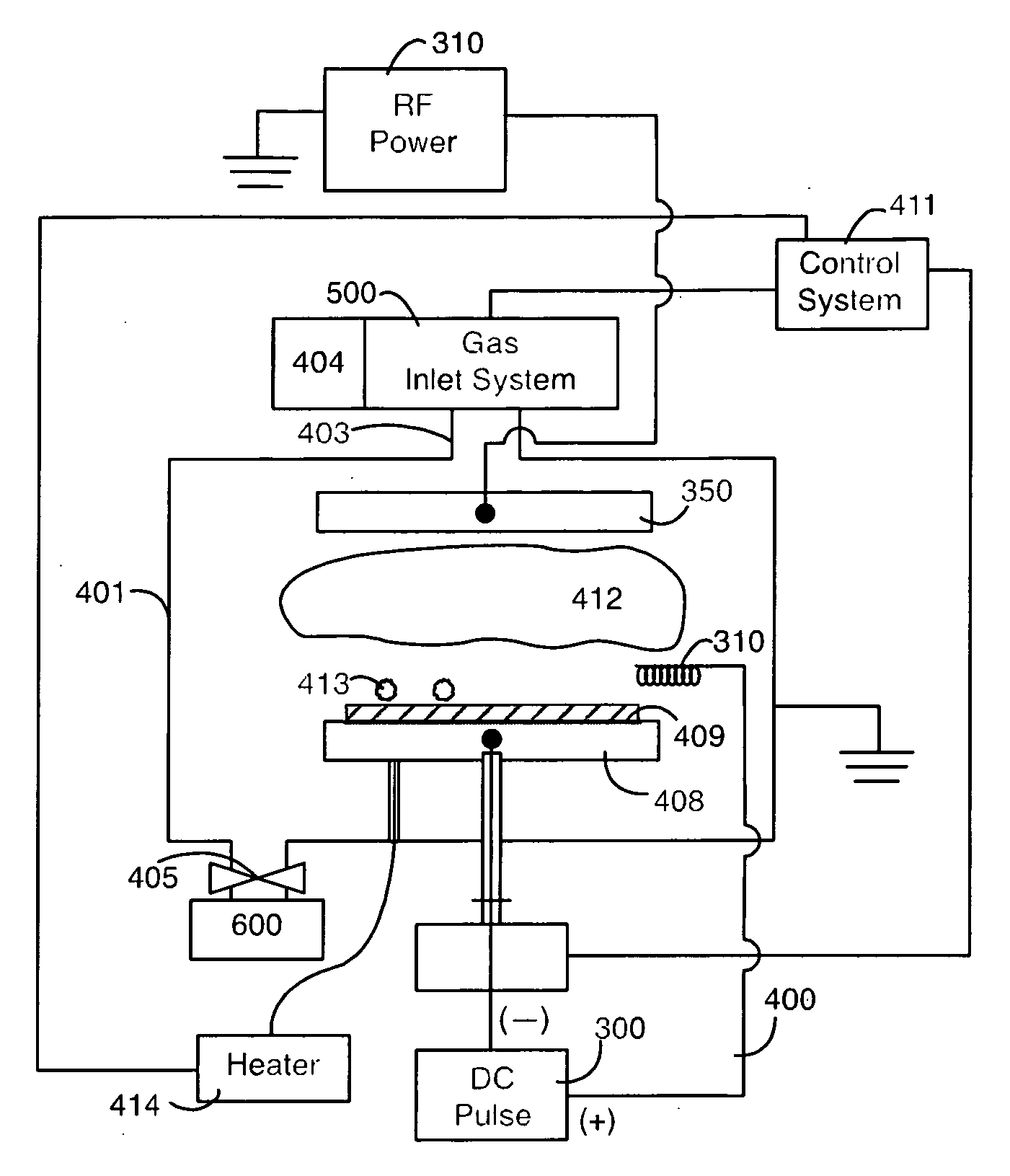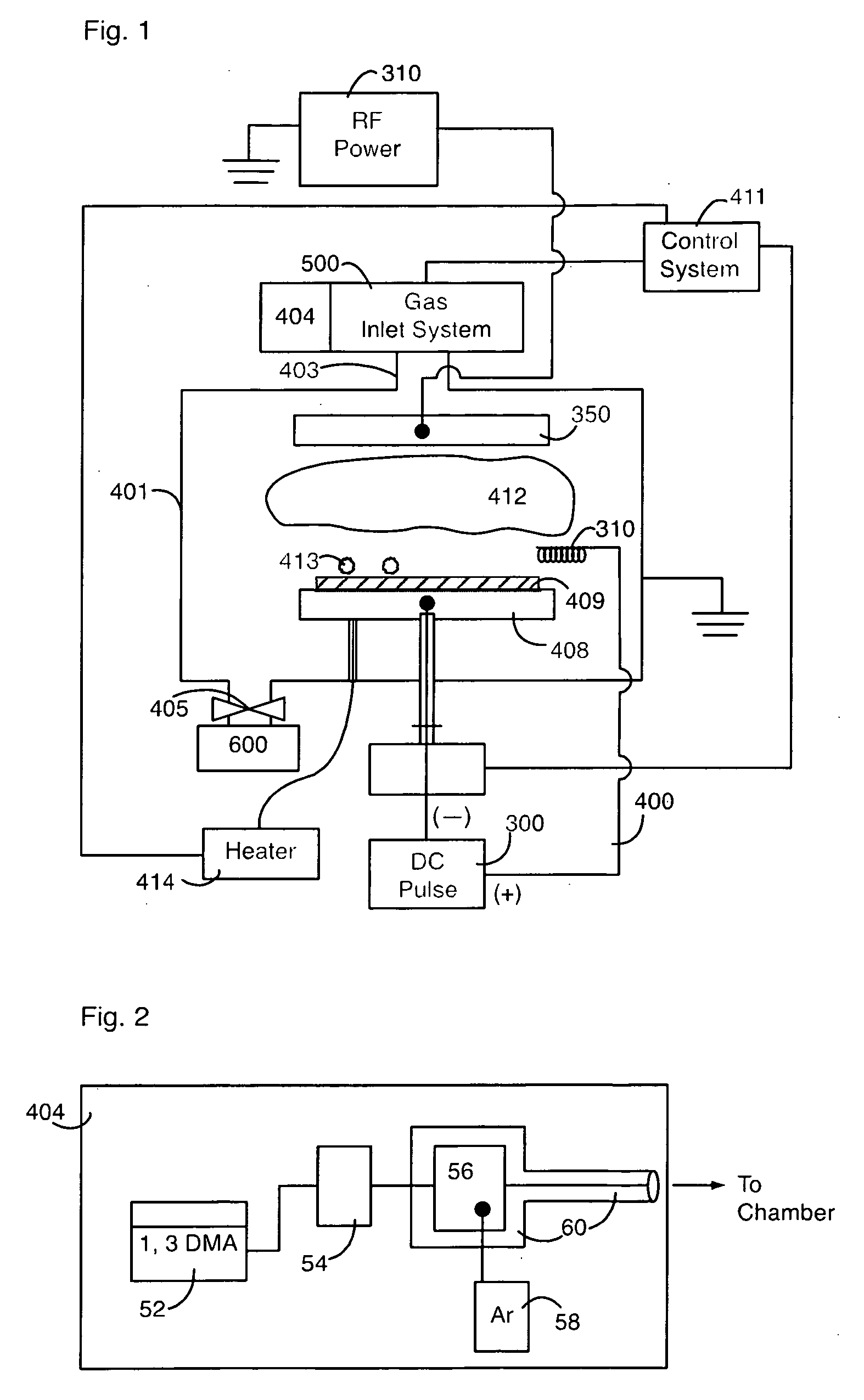Method for producing amorphous carbon coatings on external surfaces using diamondoid precursors
a technology of diamondoid precursors and amorphous carbon, which is applied in the direction of coatings, metal material coating processes, plasma techniques, etc., can solve the problems of slow deposition rate, limited process, and inability to make high spsup>3 /sup>content films, etc., to achieve the effect of fast deposition rate and desirable mechanical and tribological properties
- Summary
- Abstract
- Description
- Claims
- Application Information
AI Technical Summary
Benefits of technology
Problems solved by technology
Method used
Image
Examples
Embodiment Construction
[0038]With reference to FIG. 1, a workpiece 409 is placed inside a vacuum chamber 401 and is connected to a biasing system 300, gas inlet system 500 and pumping system 600. The biasing system consists of a power supply that applies negative bias to the workpiece. The negative bias is used to (a) increase plasma intensity close to the workpiece, (b) draw an ionized reactive gas to the surface to be coated, (c) allow ion bombardment of the film to improve film properties such as density and stress levels. In a preferred embodiment, a DC pulse power supply 300 provides the negative bias. This allows control over the film uniformity since the duty cycle can be adjusted to control heating. It also permits replenishment of the source gas and allows discharge of positive surface charge buildup, both of which can occur during the “off” portion of the cycle and which can result in arcing on an insulating film such as DLC. To further improve charge dissipation, an asymmetric bipolar pulse can...
PUM
| Property | Measurement | Unit |
|---|---|---|
| bias voltage | aaaaa | aaaaa |
| bias voltage | aaaaa | aaaaa |
| deposition rate | aaaaa | aaaaa |
Abstract
Description
Claims
Application Information
 Login to View More
Login to View More - R&D
- Intellectual Property
- Life Sciences
- Materials
- Tech Scout
- Unparalleled Data Quality
- Higher Quality Content
- 60% Fewer Hallucinations
Browse by: Latest US Patents, China's latest patents, Technical Efficacy Thesaurus, Application Domain, Technology Topic, Popular Technical Reports.
© 2025 PatSnap. All rights reserved.Legal|Privacy policy|Modern Slavery Act Transparency Statement|Sitemap|About US| Contact US: help@patsnap.com



